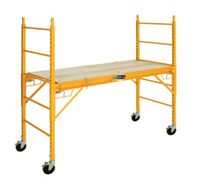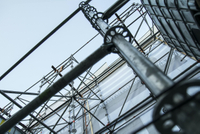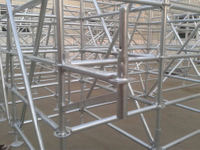Content Menu
● Understanding Aluminum Scaffolding and Its Components
● Key Factors to Consider When Choosing Aluminum Scaffolding Parts
>> 1. Project Requirements
>> 2. Quality and Safety Standards
>> 3. Material and Durability
>> 4. Portability and Storage
>> 5. Supplier Reputation and Support
>> 6. Budget Considerations
● Types of Aluminum Scaffolding Components
>> Standards
>> Ledgers
>> Braces
>> Platforms
>> Casters
>> Base Plates
>> Couplers
● Safety Standards and Compliance
● Maintenance and Inspection of Aluminum Scaffolding Parts
● Advantages of Aluminum Scaffolding Parts Over Other Materials
● Conclusion
● FAQ
>> 1. What are the main components of aluminum scaffolding?
>> 2. How do I determine the load capacity needed for my scaffolding?
>> 3. What safety standards should aluminum scaffolding comply with?
>> 4. Can aluminum scaffolding be used outdoors in corrosive environments?
>> 5. How portable is aluminum scaffolding compared to steel?
Choosing the right aluminum scaffolding components is crucial for ensuring safety, efficiency, and cost-effectiveness on construction and maintenance projects. Aluminum scaffolding is widely favored due to its lightweight, durability, and corrosion resistance. However, selecting the appropriate parts requires understanding the types, specifications, safety standards, and project needs. This comprehensive guide will walk you through everything you need to know about aluminum scaffolding parts, helping you make an informed decision.
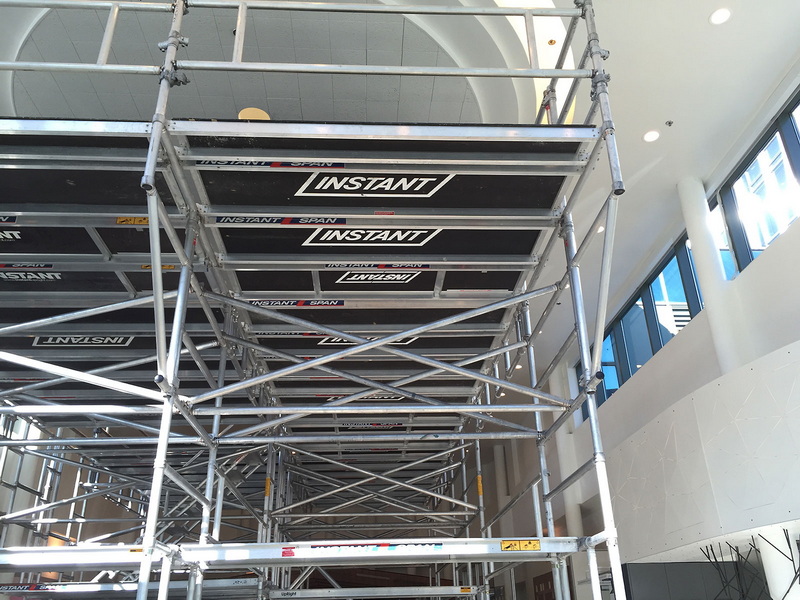
Understanding Aluminum Scaffolding and Its Components
Aluminum scaffolding consists of several key components that together form a stable and safe platform for workers at heights. The main aluminum scaffolding parts include:
- Standards: Vertical tubes that provide the main structural support.
- Ledgers: Horizontal tubes connecting the standards, providing lateral stability.
- Braces: Diagonal tubes that reinforce the structure against swaying.
- Platforms: The working surfaces where workers stand, usually aluminum or plywood.
- Casters: Wheels attached to the base for mobility.
- Base Plates: Plates at the bottom of standards to distribute load evenly.
- Couplers: Connectors that join different tubes and components securely.
Each part is typically made from high-strength aluminum alloy, such as 6061-T6, known for its excellent strength-to-weight ratio and corrosion resistance.
Key Factors to Consider When Choosing Aluminum Scaffolding Parts
1. Project Requirements
Before selecting scaffolding components, evaluate the scope and nature of your project:
- Height and Load Capacity: Determine the maximum height and the load the scaffolding must support. Aluminum scaffolding can be customized up to 40 meters or more, with load capacities typically around 900 kg per tower section.
- Type of Work: Different tasks require different scaffolding types (e.g., frame, single-sided, or dual scaffolding). For instance, dual scaffolding is ideal for heavy-duty external projects like bridges or skyscrapers, while single-sided scaffolding suits interior work such as painting or plastering.
- Mobility Needs: If the scaffold needs to be moved frequently, components like casters and lightweight frames are essential.
2. Quality and Safety Standards
Safety is paramount in scaffolding. Ensure all components meet recognized standards:
- In the U.S., OSHA mandates scaffolding must support four times the maximum intended load without failure.
- ANSI standards (e.g., ANSI A10.8-2011) provide guidelines on material quality and usage.
- Internationally, ISO standards and regional regulations (BS EN, AS/NZS, GB) govern scaffold safety and design.
- Components should be free from defects like corrosion, cracks, or distortion and comply with standards such as BS 1139 or EN 12810.
3. Material and Durability
Aluminum alloy 6061-T6 is the preferred material for scaffolding parts due to its:
- Lightweight nature, facilitating easy assembly and transport.
- High corrosion resistance, reducing maintenance costs.
- Strength comparable to steel but with less weight.
4. Portability and Storage
Consider how easy it is to assemble, disassemble, and transport the scaffolding:
- Modular designs with interchangeable parts speed up setup.
- Lightweight aluminum parts reduce labor and transportation costs.
- Components should be compact for efficient storage.
5. Supplier Reputation and Support
Choose suppliers with proven quality and reliable customer service:
- Look for certifications and compliance with safety standards.
- Check reviews and ratings.
- Ensure availability of spare parts and technical support.
6. Budget Considerations
While aluminum scaffolding may have a higher upfront cost than steel, its durability and low maintenance make it cost-effective over time.
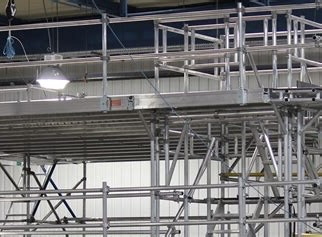
Types of Aluminum Scaffolding Components
Standards
Standards are the vertical tubes that bear the main load of the scaffold. They are designed to be strong and stable, supporting the entire structure's weight as well as the workers and materials on it. Aluminum standards are typically hollow tubes with a diameter ranging from 48mm to 60mm, made from high-grade aluminum alloy. They come in various lengths, allowing scaffolding to be built to the required height.
Ledgers
Ledgers are horizontal tubes that connect the standards together. They provide lateral stability and create the framework to support the working platforms. Ledgers are crucial for the scaffold's rigidity and must be securely fastened to the standards using couplers or locking mechanisms. Their length varies depending on the scaffold width needed.
Braces
Braces are diagonal tubes that reinforce the scaffold structure, preventing it from swaying or collapsing sideways. They connect between standards and ledgers, forming triangular shapes that increase stability. Aluminum braces are lightweight but strong, and their correct placement is vital for scaffold integrity.
Platforms
Platforms are the surfaces on which workers stand and place their tools and materials. They can be made from aluminum planks or plywood boards with aluminum frames. Aluminum platforms are preferred for their lightweight and durability, and often feature non-slip surfaces for safety. Platforms must be securely locked into place to prevent movement during use.
Casters
Casters are wheels attached to the base of scaffolding towers, enabling easy movement and repositioning. They come in various sizes and types, including swivel and fixed casters, often with locking brakes to secure the scaffold in place. Casters are essential for mobile scaffolding systems used in warehouses, factories, or indoor projects.
Base Plates
Base plates are flat metal plates that sit under the standards to distribute the load evenly across the ground or floor surface. They prevent the standards from sinking into soft ground and provide a stable foundation. For uneven or soft surfaces, adjustable base plates or screw jacks can be used to level the scaffold.
Couplers
Couplers are connectors that join scaffolding tubes together at various angles. There are several types of couplers:
- Right-angle couplers: Connect tubes at 90 degrees.
- Swivel couplers: Allow tubes to be connected at any angle.
- Putlog couplers: Connect ledger tubes to the building structure.
Couplers must be made of high-quality aluminum or steel and tightened securely to ensure scaffold stability.
Safety Standards and Compliance
Aluminum scaffolding must comply with rigorous safety standards to protect workers:
- Load Capacity: Scaffold must support four times the intended load per OSHA regulations.
- Material Quality: Use high-grade aluminum alloys, free from defects.
- Inspection: Regular checks for corrosion, cracks, and structural integrity.
- Proper Assembly: Follow manufacturer instructions and safety codes.
- Training: Workers must be trained in scaffold setup and use.
Failing to comply with these standards can lead to accidents, legal liabilities, and project delays. Always document inspections and ensure scaffolding is erected by qualified personnel.
Maintenance and Inspection of Aluminum Scaffolding Parts
Proper maintenance extends the life of aluminum scaffolding parts and ensures safety:
- Regular Cleaning: Remove dirt, grease, and debris from components after use.
- Visual Inspection: Check for dents, cracks, corrosion, or loose couplers before and after each use.
- Lubrication: Apply lubricant to moving parts like casters and couplers to prevent rust and ensure smooth operation.
- Storage: Store parts in a dry, covered area to avoid exposure to harsh weather.
- Repair and Replacement: Immediately replace damaged parts; do not attempt to repair structural components unless certified.
Routine maintenance reduces the risk of scaffold failure and keeps your investment in good condition.
Advantages of Aluminum Scaffolding Parts Over Other Materials
Aluminum scaffolding parts offer several benefits compared to steel or wood scaffolding:
- Lightweight: Easier to transport and assemble, reducing labor costs.
- Corrosion Resistant: Ideal for outdoor or humid environments without rusting.
- Durable: High strength-to-weight ratio ensures long service life.
- Low Maintenance: Requires less upkeep than steel scaffolding.
- Versatile: Suitable for a wide range of applications, from industrial to residential projects.
- Eco-Friendly: Aluminum is recyclable, reducing environmental impact.
These advantages make aluminum scaffolding parts a preferred choice for modern construction and maintenance industries.
Conclusion
Choosing the right aluminum scaffolding components involves a careful balance of project requirements, quality, safety standards, and budget. Understanding the function and specifications of each part-from standards to casters-ensures you build a scaffold that is safe, durable, and efficient. Always prioritize certified suppliers and comply with local and international safety regulations to protect workers and optimize project outcomes. With the right aluminum scaffolding parts, your construction or maintenance project will proceed smoothly, safely, and cost-effectively.
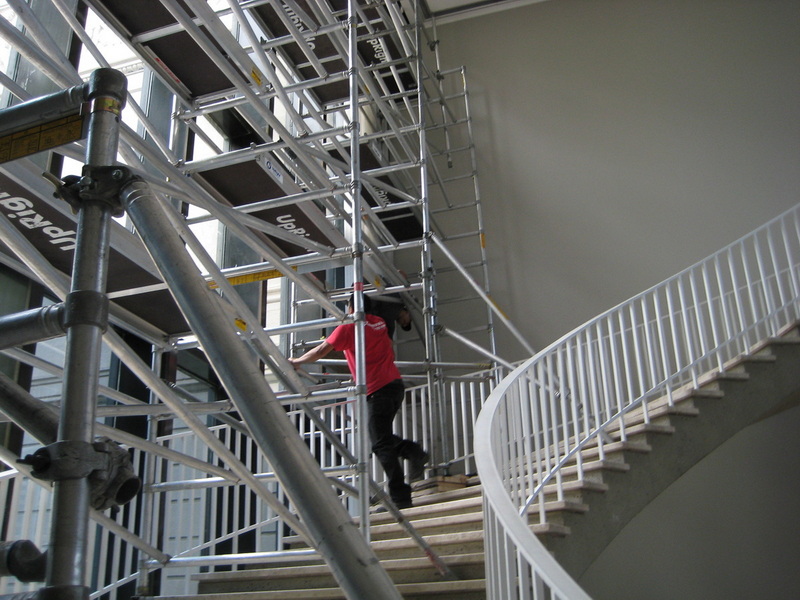
FAQ
1. What are the main components of aluminum scaffolding?
The main aluminum scaffolding parts include standards (vertical supports), ledgers (horizontal connectors), braces (diagonal supports), platforms (working surfaces), casters (wheels), base plates, and couplers (connectors).
2. How do I determine the load capacity needed for my scaffolding?
Evaluate the maximum weight of workers, tools, and materials that will be on the scaffold. OSHA requires scaffolding to support at least four times the maximum intended load to ensure safety.
3. What safety standards should aluminum scaffolding comply with?
In the U.S., OSHA and ANSI standards apply. Internationally, ISO and regional standards like BS EN or AS/NZS are relevant. All components should be free from defects and meet these regulations.
4. Can aluminum scaffolding be used outdoors in corrosive environments?
Yes, aluminum's corrosion resistance makes it suitable for outdoor use, including in marine or humid environments. However, regular inspections are necessary to ensure no damage has occurred.
5. How portable is aluminum scaffolding compared to steel?
Aluminum scaffolding is significantly lighter, making it easier to assemble, disassemble, and transport. This portability reduces labor costs and increases efficiency on-site.













